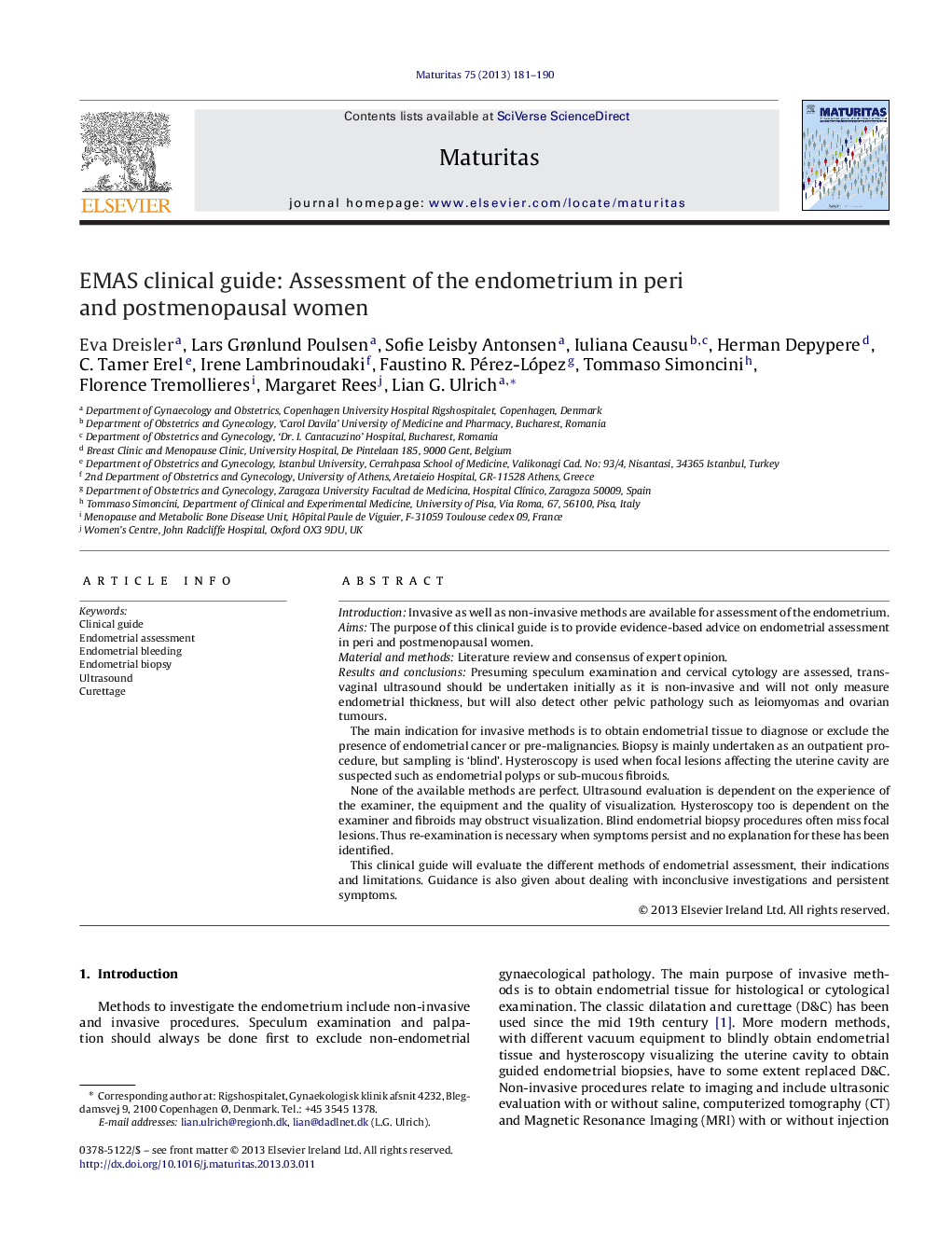| Article ID | Journal | Published Year | Pages | File Type |
|---|---|---|---|---|
| 1917692 | Maturitas | 2013 | 10 Pages |
IntroductionInvasive as well as non-invasive methods are available for assessment of the endometrium.AimsThe purpose of this clinical guide is to provide evidence-based advice on endometrial assessment in peri and postmenopausal women.Material and methodsLiterature review and consensus of expert opinion.Results and conclusionsPresuming speculum examination and cervical cytology are assessed, transvaginal ultrasound should be undertaken initially as it is non-invasive and will not only measure endometrial thickness, but will also detect other pelvic pathology such as leiomyomas and ovarian tumours.The main indication for invasive methods is to obtain endometrial tissue to diagnose or exclude the presence of endometrial cancer or pre-malignancies. Biopsy is mainly undertaken as an outpatient procedure, but sampling is ‘blind’. Hysteroscopy is used when focal lesions affecting the uterine cavity are suspected such as endometrial polyps or sub-mucous fibroids.None of the available methods are perfect. Ultrasound evaluation is dependent on the experience of the examiner, the equipment and the quality of visualization. Hysteroscopy too is dependent on the examiner and fibroids may obstruct visualization. Blind endometrial biopsy procedures often miss focal lesions. Thus re-examination is necessary when symptoms persist and no explanation for these has been identified.This clinical guide will evaluate the different methods of endometrial assessment, their indications and limitations. Guidance is also given about dealing with inconclusive investigations and persistent symptoms.
